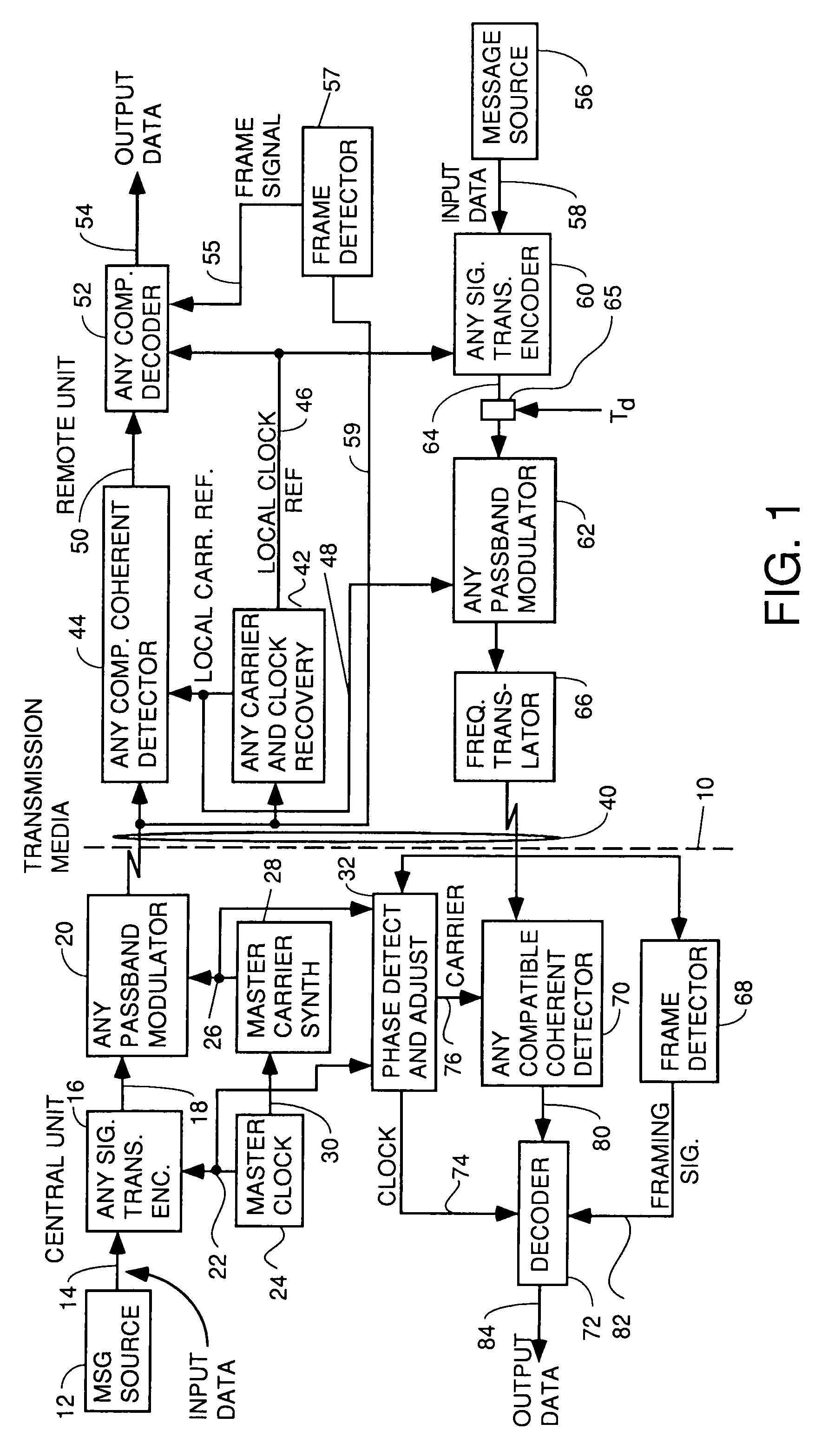Apparatus and method for trellis encoding data for transmission in digital data transmission systems
a technology of digital data transmission system and trellis, which is applied in the field of bidirectional passband digital communication system, can solve the problems of degrading system performance and throughput, affecting the performance of the system, and affecting the spectral efficiency of the system, so as to achieve the effect of reducing the number of errors
- Summary
- Abstract
- Description
- Claims
- Application Information
AI Technical Summary
Benefits of technology
Problems solved by technology
Method used
Image
Examples
specific examples
[0135]There follows some examples of specific systems that utilize the teachings of the invention. First an embodiment that uses synchronous code division multiple access is discussed. Synchronous code division multiple access in a distributed system requires that all frames from the remote units at different distributed locations arrive at the central unit receiver with their frame boundaries aligned in time. Accordingly, we start with a discussion of the ranging process which is carried out between each remote unit (hereafter RU) and the central unit (hereafter CU) so as to set a transmit frame timing delay for the remote unit which will result in proper frame alignment of that remote unit's frames.
[0136]Those skilled in the art will appreciate that the ranging processes described herein has applicability to any distributed data communication system which transmits data in frames regardless of the form of multiplexing or the form of modulation used. Likewise, the equalization proc...
PUM
 Login to View More
Login to View More Abstract
Description
Claims
Application Information
 Login to View More
Login to View More - R&D
- Intellectual Property
- Life Sciences
- Materials
- Tech Scout
- Unparalleled Data Quality
- Higher Quality Content
- 60% Fewer Hallucinations
Browse by: Latest US Patents, China's latest patents, Technical Efficacy Thesaurus, Application Domain, Technology Topic, Popular Technical Reports.
© 2025 PatSnap. All rights reserved.Legal|Privacy policy|Modern Slavery Act Transparency Statement|Sitemap|About US| Contact US: help@patsnap.com



